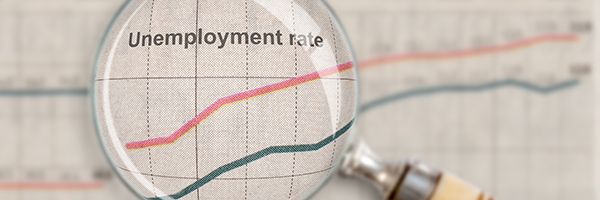Do the huge January job gains mean that the Federal Reserve will raise interest rates to a higher peak?
That was the worry today and it was enough to send the Standard & Poor’s 500 0.61% lower at the close and to knock a solid 1% off the NASDAQ Composite. The NASDAQ 100 fell 0.87% and the small-cap Russell 2000 lost 1.40%.
Federal Reserve Bank of Atlanta President Raphael Bostic, who isn’t a voting member of the interest-rate-setting Open Market Committee this year, summed up the question and one possible answer in a Monday interview with Bloomberg. January’s strong jobs report raises the possibility that the central bank will need to increase interest rates to a higher peak than policymakers had previously expected. If a stronger-than-expected economy persists, “It’ll probably mean we have to do a little more work,” Bostic said. “And I would expect that that would translate into us raising interest rates more than I have projected right now.”
Bostic told Bloomberg that his base case remains, for the moment, at an interest rate peak of 5.1%. That’s in line with the Fed’s December 14 Dot Plot projections. But…a higher peak could result from an additional quarter-point hike beyond the two currently envisioned, he said. And Bostic didn’t rule out another 50 basis point increase.
“It wouldn’t surprise me if we saw this quarter or the next come in stronger than people expect right now,” Bostic said, adding he’s focused on “imbalances between supply and demand” because too much demand can lead to higher inflation.
Today on this “re-think” the yield on the 10-year Treasury rose to 3.64%, a gain of 12 basis points. The 2-year Treasury, which is very sensitive to the Fed’s interest rate policy moves, fell to produce a jump in yield to 4.47%. On February 1, the date of the Fed’s interest rate decision, the yield on the 2-year Treasury was just 4.11%
The CME FedWatch tool continues to show a strong market consensus on a 25 basis point increase in the Fed’s benchmark interest rate at the March 22 meeting. That would take the Fed’s benchmark to a range of 4.75% to 5.00. The odds, according to prices in the Fed Funds futures market of a 25 basis don’t move stand at 93.7, essentially where they were last week. The big shift has come in the odds for a May 2 move. The odds for another 25 basis point move–to a range of 5.00% to 5.25%–were at 74.0% today. That’s up from just 40.5% on January 31.
The market will get another read on the Fed’s thinking when Fed Chair Jerome Powell speaks at the Economics Club of Washington at 11:40 a.m. tomorrow February 7.


